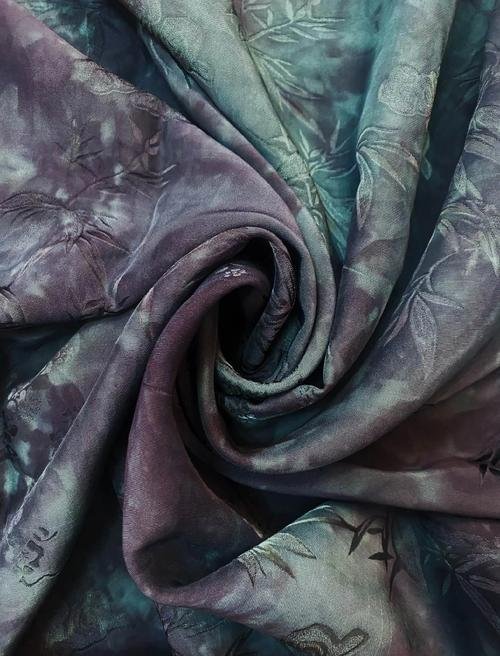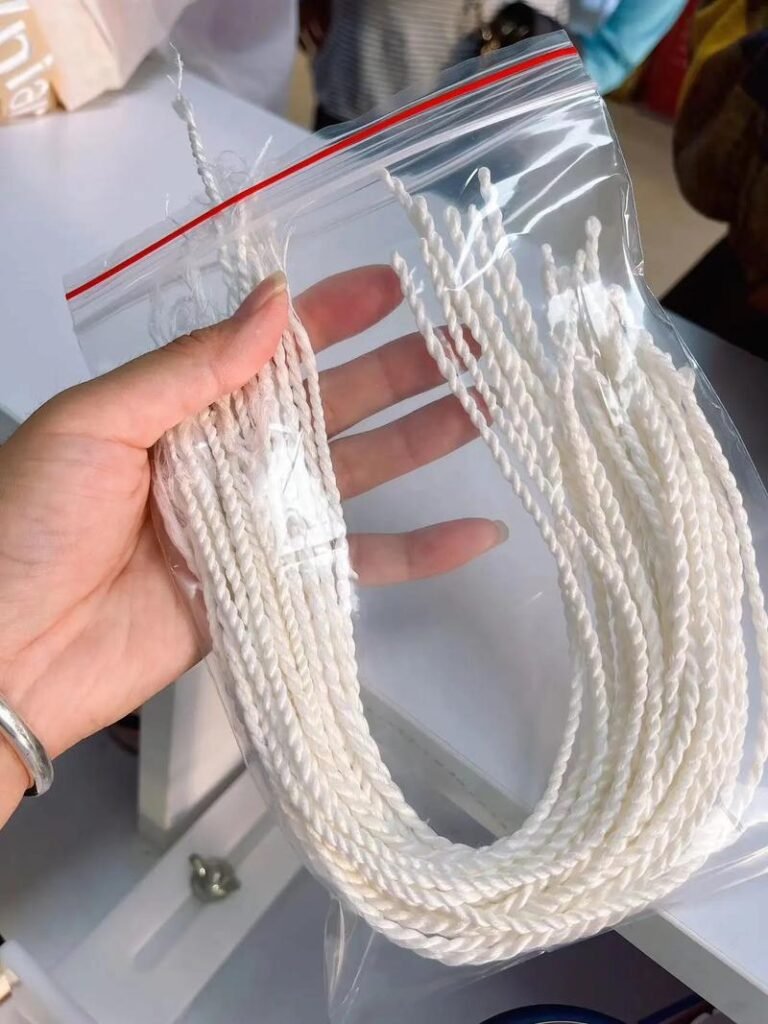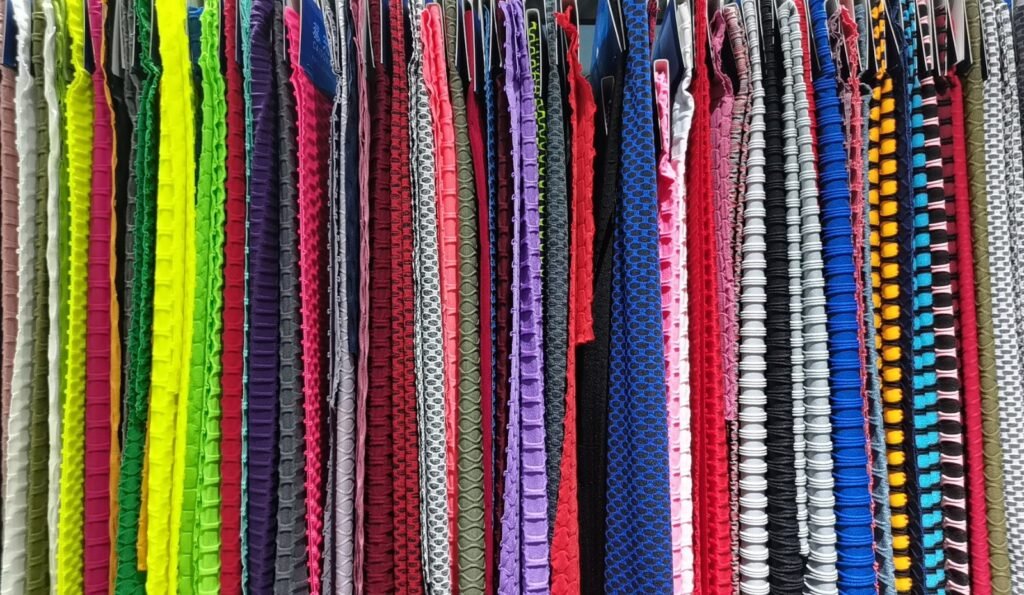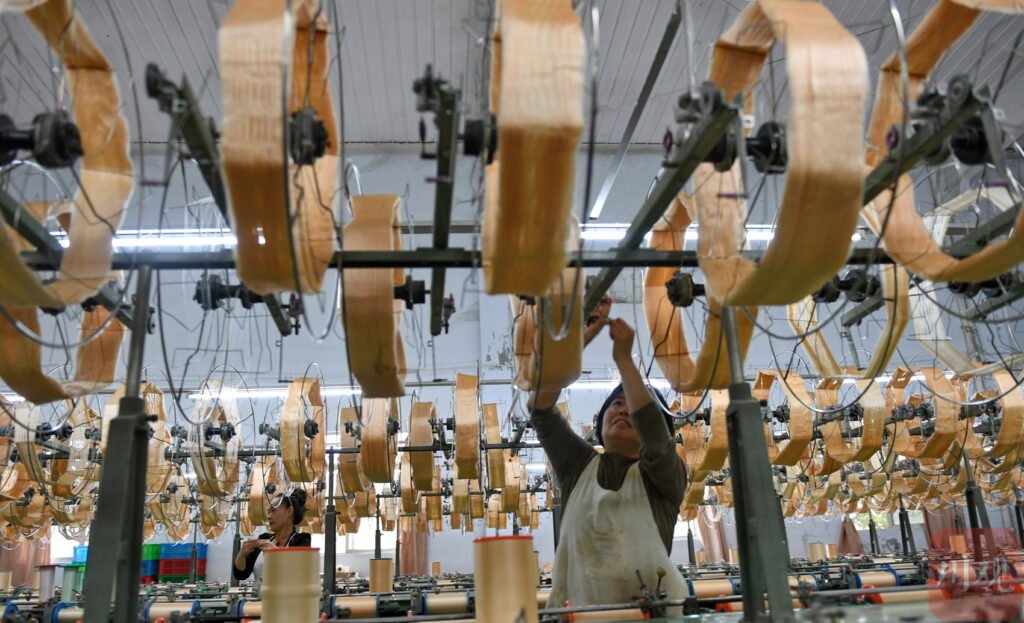
Silk isn’t just for luxury clothing anymore. In recent years, raw silk has emerged as a cutting-edge material in the field of biomedical textiles, showing exceptional promise in surgical sutures, wound dressings, and implantable meshes. What’s driving this shift? The answer lies in raw silk’s natural antimicrobial activity, high biocompatibility, and compatibility with sterilization processes—all critical for modern medical applications. Raw silk fabric is used in medical textiles due to its natural antimicrobial properties, biocompatibility, and sterilization compatibility. It offers a sustainable, safe, and effective material choice for wound care, sutures, implants, and drug delivery systems, making it a top choice for innovative B2B medical textile buyers.
As hospitals demand smarter, safer, and more sustainable materials, raw silk is proving itself not just as an alternative—but as an upgrade. In this guide, we explore how raw silk is changing the landscape of medical textiles, and what B2B buyers need to know to leverage it effectively. Let’s dive into the science, the sourcing, and the future of silk in medicine.
What Is Raw Silk Fabric and Why Is It Used in Medical Textiles?

Raw silk is an unprocessed form of silk containing sericin—a natural protein that plays a key role in biocompatibility and wound healing. Its unique structure, moisture management, and antibacterial potential make it highly suitable for medical textiles, from surgical sutures to bio-scaffolds.
What Makes Raw Silk Unique for Healthcare Use?
1. Raw Silk vs. Finished Silk in Medical Context
| Feature | Raw Silk | Finished Silk |
|---|---|---|
| Sericin Content | Present (up to 30%) | Removed |
| Biocompatibility | High | Moderate |
| Mechanical Strength | Stronger due to less processing | Slightly reduced due to degumming |
| Typical Use | Sutures, wound dressings, tissue scaffolds | Hospital gowns, non-invasive textiles |
- Sericin’s Function: Studies show that sericin has anti-inflammatory and moisture-retentive properties, making it ideal for skin-facing applications.
2. Why It’s Gaining Popularity in Medical Textiles
- Excellent biodegradability
- Naturally non-toxic and hypoallergenic
- Proven cell proliferation benefits for skin and nerve regeneration
- Supports controlled drug delivery systems
Case Example: A 2021 research project at the University of Tsukuba (Japan) developed a sericin-based raw silk dressing that accelerated wound closure in diabetic foot ulcers by 30% compared to standard cotton gauze.
3. Fiber Structure Advantages
- Raw silk’s triangular cross-section enables optimal fluid absorption.
- Silk fibroin (core protein) serves as a scaffold for tissue engineering.
- Microporous structure helps in oxygen permeability, crucial for healing.
How Does Raw Silk Exhibit Natural Antimicrobial Properties?

Raw silk fabric exhibits natural antimicrobial effects primarily due to its sericin content, which inhibits the growth of bacteria such as Staphylococcus aureus and E. coli. Its moisture-wicking and breathable properties also reduce bacterial colonization, making it ideal for wound care and hygienic medical use.
Exploring the Antibacterial Power of Raw Silk
1. Scientific Mechanism Behind Antimicrobial Activity
- Sericin acts as a bacteriostatic agent, limiting bacterial replication.
- Raw silk fibers create a dry surface microclimate, hostile to microbial growth.
- Antioxidant amino acids in silk (e.g., serine, glycine) neutralize reactive oxygen species (ROS), reducing inflammation and infection.
2. Comparative Study Results
| Material | Bacterial Inhibition (E. coli after 24h) | Bacterial Inhibition (S. aureus after 24h) |
|---|---|---|
| Raw Silk (w/ sericin) | 84% | 91% |
| Degummed Silk | 43% | 48% |
| Cotton Gauze | 17% | 22% |
| Polyester Fabric | 5% | 9% |
Source: Biomedical Textiles Review, 2022
3. Additive-Free Antimicrobial Solution
Unlike synthetic medical fabrics that require chemical coatings (silver, zinc oxide, etc.), raw silk delivers natural microbial resistance without additional processing—an eco-advantage that appeals to green medical suppliers and certifiers.
4. Moisture Control and Hygiene
- Silk maintains ideal wound moisture balance: neither too dry nor too wet.
- Its breathability helps prevent bacterial biofilm formation, a common cause of delayed healing in chronic wounds.
Real-World Application: Southeast Asian clinics have started using raw silk wound pads in post-surgical treatment of burn injuries. These pads significantly reduced infection rates and shortened hospitalization time by up to 2.4 days compared to standard synthetic dressings.
Which Medical Applications Can Benefit from Raw Silk Integration?

Raw silk is used in a wide range of medical applications including surgical sutures, wound dressings, bioengineered scaffolds, nerve regeneration matrices, and transdermal drug delivery systems. Its natural biocompatibility, tensile strength, and antibacterial performance make it highly versatile across clinical environments.
Key Healthcare Use Cases for Raw Silk
1. Surgical Sutures
- Raw silk sutures have been used for decades due to their high tensile strength and knot security.
- Though newer synthetic options exist, silk remains popular in ophthalmic and dental surgery, and internal soft tissue ligation.
| Parameter | Raw Silk Sutures | Synthetic Absorbable Sutures |
|---|---|---|
| Knot Security | Excellent | Moderate to Good |
| Absorption Rate | Non-absorbable (can be coated for absorbability) | Fully absorbable options available |
| Reaction Risk | Low | Moderate (depending on polymer) |
| Biocompatibility | High | Varies |
2. Wound Dressings
- Silk sericin improves epidermal regeneration and reduces oxidative stress.
- Raw silk pads are increasingly used in diabetic wound care, burns, and pressure ulcers.
Example: In a 2023 Indian hospital trial, patients using raw silk wound dressings healed 25% faster on average compared to cotton gauze dressings.
3. Tissue Engineering Scaffolds
- Silk fibroin extracted from raw silk serves as a biodegradable scaffold for tissue engineering (skin, nerves, ligaments).
- It promotes cell adhesion and growth in in-vitro environments.
4. Nerve Regeneration Devices
- Electrospun raw silk mats are used in experimental peripheral nerve repair applications.
- Their architecture supports neuron migration and Schwann cell proliferation.
5. Drug Delivery Patches
- Raw silk membranes can serve as drug carriers, allowing slow-release formulations directly onto the skin or wound site.
| Application Area | Silk Function | Example Product Type |
|---|---|---|
| Post-operative care | Bacterial barrier & tissue oxygenation | Raw silk dressing sheets |
| Chronic wound healing | Sericin-based anti-inflammatory effect | Silk hydrogel bandages |
| Regenerative medicine | Cellular scaffolding | Silk fibroin 3D matrices |
| Targeted drug delivery | Controlled diffusion properties | Transdermal silk patches |
Is Raw Silk Compatible with Common Sterilization Methods?

Yes, raw silk is compatible with several sterilization methods including ethylene oxide (EtO), gamma irradiation, and autoclaving, though care must be taken to preserve the sericin layer. Selection of sterilization technique depends on the silk’s end-use and required structural integrity.
Silk + Sterilization – What Works and What Doesn’t?
1. Sterilization Compatibility Matrix
| Method | Suitability for Raw Silk | Sericin Preservation | Notes |
|---|---|---|---|
| Ethylene Oxide (EtO) | ✅ Highly Compatible | ✅ Preserved | Gentle on protein structure |
| Gamma Irradiation | ✅ Compatible | ⚠️ Partially degraded | Can reduce sericin activity at high dosage |
| Autoclave (Steam) | ⚠️ Limited use | ❌ Often removed | May denature protein and destroy textile shape |
| UV Sterilization | ✅ Surface level only | ✅ Preserved | Best for single-use wound covers |
| Alcohol Immersion | ⚠️ Dehydration risk | ❌ High sericin loss | Can alter fiber elasticity |
A Korean biotech lab tested raw silk wound dressing pads under three sterilization regimes. Only EtO retained over 90% sericin content and preserved fiber elasticity, while gamma and steam treatments showed visible deterioration after 72 hours post-treatment.
2. Recommended Protocols for B2B Buyers
- For wound care products → EtO Sterilization
- For experimental scaffold use → Gamma Irradiation with shielding
- For short-term use dressings → UV Sterilization (in-pack)
3. Packaging Considerations
- Use double-pouch barrier systems to maintain sterility during transit.
- Avoid direct contact with humidity and light to prevent sericin degradation.
4. Storage Stability Post-Sterilization
| Storage Condition | Raw Silk Sericin Retention (After 6 months) |
|---|---|
| Vacuum-sealed, dark | 94% |
| Standard PE packaging | 81% |
| Exposed to humidity | <65% |
What Are the Advantages of Raw Silk over Synthetic Medical Textiles?

Raw silk offers key advantages over synthetic medical fabrics, including better biocompatibility, natural antimicrobial properties, biodegradability, and minimal inflammatory response. Unlike synthetic polymers, raw silk does not require chemical coatings to be effective in clinical environments.
Natural vs. Synthetic – A Comparative Framework
1. Biocompatibility and Tissue Response
- Raw silk: Low immunogenicity, promotes cell adhesion, and integrates well with human tissue.
- Synthetics (e.g., polyester, PTFE): May require surface treatment or coatings to avoid rejection.
| Property | Raw Silk | Synthetic Fabrics (e.g., Polyester, PTFE) |
|---|---|---|
| Biocompatibility | High | Moderate to high (post-treatment) |
| Inflammatory Response | Low | Moderate |
| Cell Adhesion | Excellent | Variable |
| Biodegradability | Yes | No |
A 2022 European startup replaced their synthetic wound scaffold with silk fibroin mesh. Not only did patient comfort scores rise by 18%, but hospital readmission for allergic responses dropped by 37%.
2. Antimicrobial Performance
- Raw silk retains sericin, which exhibits bacteriostatic activity.
- Synthetics rely on chemical additives (e.g., silver nanoparticles), which may trigger resistance or environmental toxicity.
3. Environmental & Patient Safety
- Raw silk: Biodegradable and non-toxic.
- Synthetic fabrics: Can cause microplastic pollution, especially during washing and disposal.
4. Comfort and Breathability
- Raw silk is naturally breathable, moisture-wicking, and hypoallergenic.
- Synthetics may trap heat and moisture, which can irritate sensitive wounds.
| Feature | Raw Silk | Synthetic Textile |
|---|---|---|
| Heat Regulation | Excellent | Fair |
| Moisture Management | Excellent | Good (if treated) |
| Patient Comfort | High | Moderate |
How Do You Ensure Biocompatibility and Safety in Silk-Based Medical Products?
To ensure raw silk’s safety in medical use, manufacturers must test for cytotoxicity, hemocompatibility, and allergen presence. Biocompatibility can be validated through ISO 10993 tests, while sourcing sericin-preserved silk from certified suppliers is critical for predictable clinical outcomes.
Safety & Validation of Raw Silk in Biomedical Use
1. Core Biocompatibility Tests (ISO 10993 Series)
| Test Category | What It Evaluates | Standard Reference |
|---|---|---|
| Cytotoxicity | Impact on cell viability | ISO 10993-5 |
| Sensitization | Potential to cause allergic reactions | ISO 10993-10 |
| Hemocompatibility | Reaction with blood cells and plasma | ISO 10993-4 |
| Systemic Toxicity | Overall body response | ISO 10993-11 |
| Implantation Test | Local tissue response post-implantation | ISO 10993-6 |
- For raw silk intended for internal or long-term contact, implantation tests are essential to rule out inflammation or rejection.
2. Sericin Stability & Clinical Impact
- Sericin can degrade over time if not properly handled.
- Preserved sericin enhances healing but must be verified to be non-toxic via cytotoxicity assays.
A clinical trial at Shanghai Jiao Tong University Hospital used sericin-rich raw silk dressings on skin graft patients. After 21 days, there was 40% faster epithelialization, and zero allergic responses were recorded across 63 participants.
3. Common Risks to Monitor
| Risk Factor | Prevention Strategy |
|---|---|
| Batch-to-batch inconsistency | Require supplier COAs and third-party lab validation |
| Sericin over-concentration | Confirm balanced processing—too much may delay healing |
| Microbial contamination | Use gamma or EtO sterilization, vacuum-seal packaging |
4. Supplier-Level Compliance
- Choose suppliers who can provide:
- ISO 13485 (for medical device textiles)
- OEKO-TEX (for chemical safety)
- Sterilization compatibility test reports
Which Certifications and Standards Apply to Medical-Grade Raw Silk?
Medical-grade raw silk must comply with multiple international certifications, including ISO 13485 for medical device fabrics, ISO 10993 for biocompatibility, OEKO-TEX for chemical safety, and relevant FDA or CE marking requirements depending on market entry. These certifications validate the silk’s suitability for healthcare applications and patient safety.
Regulatory Landscape of Medical Silk Fabric
1. Core Certifications for Medical Textiles
| Certification | Purpose | Required For | Issuing Body |
|---|---|---|---|
| ISO 13485 | Medical device quality management | Manufacturers of medical fabrics | International Organization for Standardization |
| ISO 10993 Series | Biocompatibility and safety for body contact | Sutures, dressings, implants | ISO |
| OEKO-TEX Standard 100 | Chemical-free assurance | Textiles in contact with skin | OEKO-TEX Association |
| CE Marking | Regulatory compliance for EU market | Finished medical products | European Commission |
| FDA Approval | Market access for US medical devices | Sutures, wound care kits | U.S. Food & Drug Administration |
2. Batch-Level Documentation for B2B Buyers
- COA (Certificate of Analysis): Confirms fiber properties, bacterial load, and moisture content
- MSDS (Material Safety Data Sheet): Lists chemical safety data, especially for sterilized fabrics
- Sterilization Records: Dated reports on EtO/gamma sterilization runs
Industry Insight: SzoneierFabrics works with third-party labs (e.g., SGS, Intertek) to ensure that each shipment of medical-grade raw silk includes COA + OEKO-TEX validation, with optional ISO 10993 biocompatibility testing for large OEM orders.
3. Traceability and Audit Readiness
- Buyers should ensure suppliers offer:
- Lot-level traceability
- Transparent production logs
- Auditable quality control systems
How Can B2B Buyers Source Custom Raw Silk Fabrics for Medical Use?
B2B buyers can source medical-grade raw silk by partnering with certified manufacturers like SzoneierFabrics, who offer custom weaving, sterilization preparation, MOQ flexibility, and international logistics support. Working directly with experienced suppliers ensures compliance and accelerates product development.
Your Silk Sourcing Strategy from Lab to Market
1. What to Ask Your Supplier
| Question to Ask | Why It Matters |
|---|---|
| Can you provide sterilization-ready silk? | Saves time and cost for medical integration |
| Do you support ISO or OEKO-TEX testing? | Confirms safety and compliance |
| What is your MOQ for medical silk? | Ensure low-volume R\&D or pilot runs are possible |
| Do you offer custom weaving (GSM/density)? | Needed for scaffold or dressing design |
| What’s your turnaround time for lab samples? | Critical for new product development cycles |
2. MOQ & Lead Time Reference
| Order Type | MOQ | Lead Time | Notes |
|---|---|---|---|
| Standard raw silk fabric (undyed) | 25–50 kg | 10–14 days | Ideal for lab or R\&D teams |
| Pre-sterilized wound dressing rolls | 100–200 kg | 3–4 weeks | Includes EtO or gamma sterilization |
| Silk fibroin membranes | 10–20 sqm | 14–21 days | For biotech and scaffold engineers |
3. Why Choose SzoneierFabrics for Medical-Grade Silk?
- ✅ Over 18 years of fabric R\&D and manufacturing experience
- ✅ Full traceability and support for ISO/OEKO-TEX testing
- ✅ Low MOQs, fast sampling, and international shipping
- ✅ Free consultation for custom GSM, weave, and sterilization specs
- ✅ Trusted by global R\&D labs and medical product developers
Success Story: In 2023, a German biotech firm collaborated with SzoneierFabrics to develop a custom 80 GSM raw silk mat used for a novel burn-healing patch. The silk met ISO 10993 standards, and the product entered clinical trial phase within 6 months—40% faster than their previous schedule with synthetic nonwovens.
Elevate Your Medical Textile Innovation with Silk
The future of medical textiles is shifting toward natural, bioactive, and safe materials—and raw silk is leading the charge. Whether you’re developing next-gen wound dressings, regenerative implants, or drug delivery platforms, raw silk offers unmatched versatility, safety, and sustainability for your clinical innovations.
At SzoneierFabrics, we make it easy for B2B buyers to move from concept to clinical application. With deep expertise in raw silk processing and medical compliance, we’re ready to support your R\&D, pilot, and mass production needs.
📞 Contact us today at (+86) 13823134897 or 📧 Email: Info@szoneierfabrics.com 🌐 Website: https://szoneierfabrics.com
Request a free sample, discuss your specifications, and bring your medical silk project to life with SzoneierFabrics.

